Discussion:
You must be logged in to reply to this topic.
- March 1 Point of View (POV)
-
March 3, 2023 at 7:33 am #89701
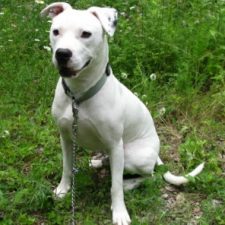
Prof. MasielloParticipantPOV (Point of View)
Please go to this link. It is an 85-minute presentation.
https://www.dropbox.com/s/b2ueta6tbl4b27f/POV%202023.avi?dl=0
Questions for discussion:
1) Other than voice-over narration, have you ever noticed anything in any films that you would have identified as a POV shot prior to our video compilation? Please explain and provide examples.
2) Please discuss something you feel you learned from this presentation.
3) Please mention something you liked about the video clips.
4) Please ask any question brought to mind about POV in films.
Post your replies here on OpenLab.
-
This topic was modified 8 months, 3 weeks ago by
 Prof. Masiello.
Prof. Masiello.
February 25, 2024 at 12:15 am #92944
Angel PadillaParticipant1.) Other than voice-over narration, I have definitely noticed POV shots in order films prior to the video compilation that was shown. For example, one of my favorite action movies ever titled Hardcore Harry is shot entirely in first person, making for one of the most immersive experiences I’ve ever watched.
2.) Something I feel I learned was how Alfred Hitchcock heavily used POV shots in his movies in order to emphasize a character’s perspectives. I remember watching The Birds one time and being really drawn in by the shots that they had since it made the scenes very intense.
3.) Something I liked about the video clips was how diverse they all felt when it came to highlighting a character’s perspective in a narrative. Like for example, Forrest Gump being a part of the POV clips was fascinating to me because I never thought voice over narrations counted as POV. It’s one of my favorite movies ever and it was cool seeing it as a part of the presentation.
4.) One question that I have in mind is if there’s any use of POV in superhero movies? I feel like the use of a first person effect would be great for a superhero movie. I believe The Amazing Spider-Man had first person in the movie if I’m not mistaken.Angel, the clips I included were very noticeable ones but all well-made movies make use of POV in subtle ways, like typically when there’s a conversation between two people and the camera shows one person at a time. Usually the speaker is shown in a one-shot, followed by a reaction by the other person also in a one-shot. The Silence of the Lambs clips showed that rather intensely since to speakers were making eye-contact with the camera/viewers. As for superheros, there was a brief clip of Spider-Man swinging onto a glass building where he ends up looking at his own masked face in the reflection on the window.
-
This reply was modified 8 months, 2 weeks ago by
 Prof. Masiello.
Prof. Masiello.
February 28, 2024 at 9:01 pm #92969
Kenneth CaoParticipant1. Other than voice over narration I have noticed POV shots in films prior to the video compilation. For example, in the lego movie where the where the human and the main character were shown in their POV.
2. Something I learned is that using different POVs create a immersive experience and helps us understand what the characters are experiencing.
3. Something I liked about the video clips is how the different POVs provide a different mood for example in “Jaws” where the shark’s POV is shown hunting a person and it gave a sense of fear and terror.
4. One question that I have in mind about POV in films is should multiple POVs be used in every movie? While including multiple POVs might enhance a movie’s quality but are there some instances when it may not?Kenneth, the answer is in what the filmmakers are trying to emphasize. If the emphasis is on plot, maybe just have various POV’s for interesting variety. If the emphasis is on a character study, then maybe just have one POV. Let me give you two literary examples. In Lolita, we get the whole story from Humbert. He participates in every scene and give his perspective. I read a novel once where there was a large hillbilly family and the mother had died. There was a minister who came to conduct the service and what seemed to be about six children of various ages and the husband. Every chapter of the book was narrated by a different character, each child, the husband, the minister, and even the dead woman narrating from the grave. It was a fascinating way for the author, William Faulkner, to unfold his simple story, called As I Lay Dying. There is no one way.
Great question!
-
This reply was modified 8 months, 2 weeks ago by
 Prof. Masiello.
Prof. Masiello.
February 29, 2024 at 9:58 pm #92986
Angel OrdonezParticipant1) Other than voice-over narration, have you ever noticed anything in any films that you would have identified as a POV shot prior to our video compilation? Please explain and provide examples.
Yes I have! My favorite movie, Sinister, has many POV shots. The movie itself has mini VHS tapes shown within the film and this is where the POV shots of the killer takes place.
2) Please discuss something you feel you learned from this presentation.
I learned the use of “the camera view finder”. It allows the director to make the most use of a scene by showing context of the scene and getting the point across. Angel, I am not sure what you mean. All cameras have view finders: the rectangular or square “preview” of what the camera will preserve. The only time my presentation used that term was for a scene in Superman: The Movie because what we saw was through the viewfinder of Jimmy Olsen’s camera. An expensive camera, like his, has a center fresnel lense that is perhaps clearer than the rest of the image.https://ayearwithmycamera.com/blog/what-is-live-view-on-your-camera3) Please mention something you liked about the video clips.
I love the integration os horror films within this presentation and how POV shots can be used to display different scenarios and emotions.
4) Please ask any question brought to mind about POV in films.
Hardcore Henry s a great POV shot style film, however, how difficult is it to create such films? I might guess that it isn’t as hard as shooting a regular film because once the director of photographer, the DP, knows his limited POV task, he can stage things accordingly and all the images are essentially from the same distance range. He doesn’t have to worry about close-ups, two shots (since there aren’t two people having a conversation) or odd creative angles.-
This reply was modified 8 months, 2 weeks ago by
 Prof. Masiello.
Prof. Masiello.
-
This reply was modified 8 months, 2 weeks ago by
 Prof. Masiello.
Prof. Masiello.
March 1, 2024 at 8:32 am #92987
Andrew_RParticipant1) POV shots ground us as the viewer (we see what the character sees), POV shots can also give information in certain scenarios. Such as John Carpenter’s “They Live” we see John Nada view business ads, promotions, and signs as disturbing messages. The sunglasses he wears help him see the real message, we get POV shots after he puts them on and we can see the visual change in text and color. Sale promotions turn into the word Consume, and we see instructions laid all over the city. What an excellent example, Andrew!
2) POV shots are not only used to show us what the character sees but can also show us how they feel. Watching a little guy be thrown by a bigger guy is somewhat comical, but changing the POV to the little guy sizing up to the big guy and easily being picked up and hurled gives the viewer the same level of panic that the little guy is facing.
3) I liked this particular shot in “The Diving Bell and the Butterfly”, the eye being stitched is a great POV shot and sets up one of the characters’ incidents and insinuates a back story has occurred recently. This POV shot may help get the reader into the story more easily since narration on the character’s back story and motivation is overly used as an introduction
4) POV shots are very useful and they can help portray a character’s inner side (emotions, physical POV, habits like trembling or shaking, etc.), what other options can directions be used to display these instead of having repeated POV shots during movies. We see this sort of thing in action movies where running through scenes often has a large amount of cuts and jumps That’s a curious question. Thinking creatively, I imagine those shots you might see in a boxing scene where the crowd in their seats is shown reacting would be an alternative. I am pretty sure there’s at least one old comedy film where this happens and the woman who didn’t want to go on a date gets splattered with blood while watching and we never see the boxers.
-
This reply was modified 8 months, 2 weeks ago by
 Prof. Masiello.
Prof. Masiello.
March 1, 2024 at 9:00 pm #92995
MehrinisoParticipant1. I understood POV shots as a character remembering the past or a character in a movie showing us their surroundings like we are their eyes. In the movie Pyscho 1960, Norman Bates, who is controlled mentally by his dead mother’s words, speaks to himself silently while looking around in the interrogation room. Bates does a voice-over narration of what he thinks at that moment. Another example in that movie is the detector going up the stairs we see from his POV that the camera climbs up the stairs before he gets killed.
2. I learned that POV doesn’t just consist of voice-over narration but several different camera angles. POV shots allow the audience to see other characters through another one’s eyes.
3. I liked how different POV shots are used. In other words, this presentation consists of voice-over and seeing the film through the characters’ eyes shots that help the viewers understand how different angles of shots affect a movie.
4. Does the POV shot include humans or can it be with non-living things also?
March 2, 2024 at 2:03 pm #92998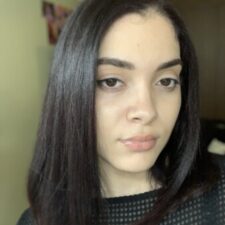
Alyssa skerretParticipant1) I have a better understanding of what POV shots are and I also got to see how POV shots are different in creative ways in films. For example, the birds film shows the POV of the main character, so we’ll see what she is seeing, which is a frightened woman. Another example is my favorite movie Pulp Fiction, we see the POV of the car trunk as Vince and Jules are gathering their weapons.
2) I learned that POV shots are more than just a voiceover narration, but also include various camera angles. Through these POV shots, a viewer can observe other characters, what is occurring, and the emotions from the viewpoint of the main character.
3) I like how the presentation explores every aspect of the POV shots and provides insightful notes on their usage within the narrative. It’s interesting to see how each POV shot contributes to the storytelling and offers a unique perspective.
4) Is there a 3D film that includes a POV shot? If so, does the 3D effect on the POV shot look more amusing than in non-3D versions?
-
This reply was modified 8 months, 3 weeks ago by
 Alyssa skerret.
Alyssa skerret.
March 4, 2024 at 9:23 pm #93030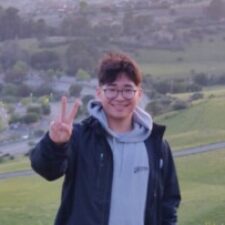
Mu SongParticipant1. In the movie 1917, the movie follows the main character and is mostly on him the whole time. The movie is shot in one shot so the movie follows him the whole time and we really see everything in his POV.
2. I learned what different POVs imply and how they are used for different effects. There are also different ways to show a POV in Lady of the Lake, we can only see the main character if they look in a mirror whereas Hardcore Henry has a camera strapped to his head and we see everything in his POV and feel his reactions.
3. I liked how there are descriptions to explain the different uses of POV and how they are shown within the clip. It makes it clearer to understand and allows us to focus on things that we might’ve missed.
4. How are POV shots done like in The Amazing Spider-Man since we don’t have a Spider-Man to swing around?
March 7, 2024 at 12:17 am #93077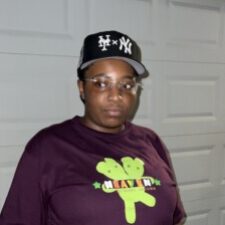
Tshari YanceyParticipant1). A film scene I seen as a POV shot, is the original Halloween and we see a camera pan towards the house until it goes inside to the kitchen, a hand reaches for a butcher knife then we realize the eyes we were looking through was Micheal Myers himself before he kills his sister.
2). Something I learned from this presentation is that the Blair Witch final scene is considered a POV shot. I always thought that it was just a close-up shot of the actor using the video camera to draw the audience closer to what is about to happen.
3). I liked the creative ways we can POV shots like the eyeglasses being a silent murder witness. We see the murder through the frames but then the camera cuts back to him picking up the glasses I think that’s a great effect.
4). When doing a Voice-over narration does the actor watch the clips they want him to narrate so the story they are retelling is accurate to what is happening in the scene?
September 15, 2024 at 8:11 am #95527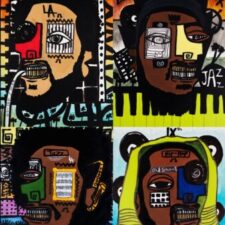
Adonis CParticipant1. Yes, a shot (which I recently learned is called an over-the-shoulder shot or a mid-shot) of two characters in a dialogue. I notice in shows like Law & Order for instance.
2. First off, I realized how filmmakers use POV shots to let us see stories genuinely through a character’s perspective. It was really neat to think about movies like “Hardcore Henry” giving you that full-on first-person feel, or how Hitchcock used POV in “The Birds” to ramp up the tension. I also learned how these shots can totally change the vibe of a scene, like making things scarier by using the shark’s viewpoint in “Jaws.” Another interesting thing was seeing how directors juggle different POVs to either dig deep into character development or keep the plot engaging, similar to how authors like William Faulkner did in “As I Lay Dying.”
3. What I really liked about the presentation was how it used all kinds of movies to show off different POV shots. It was great seeing examples from films like “The Birds” and “Pulp Fiction,” which helped explain how POV can be more than just voiceover. These examples made me appreciate how different angles can bring out specific emotions, like fear or excitement, and really pull you into the story. The range of examples made the whole thing super engaging and informative.
4. How do different POV styles really impact how we connect emotionally with characters in various movie genres. Are some POV techniques more effective in, say, horror films vs action movies?
-
This topic was modified 8 months, 3 weeks ago by
You must be logged in to reply to this topic.


